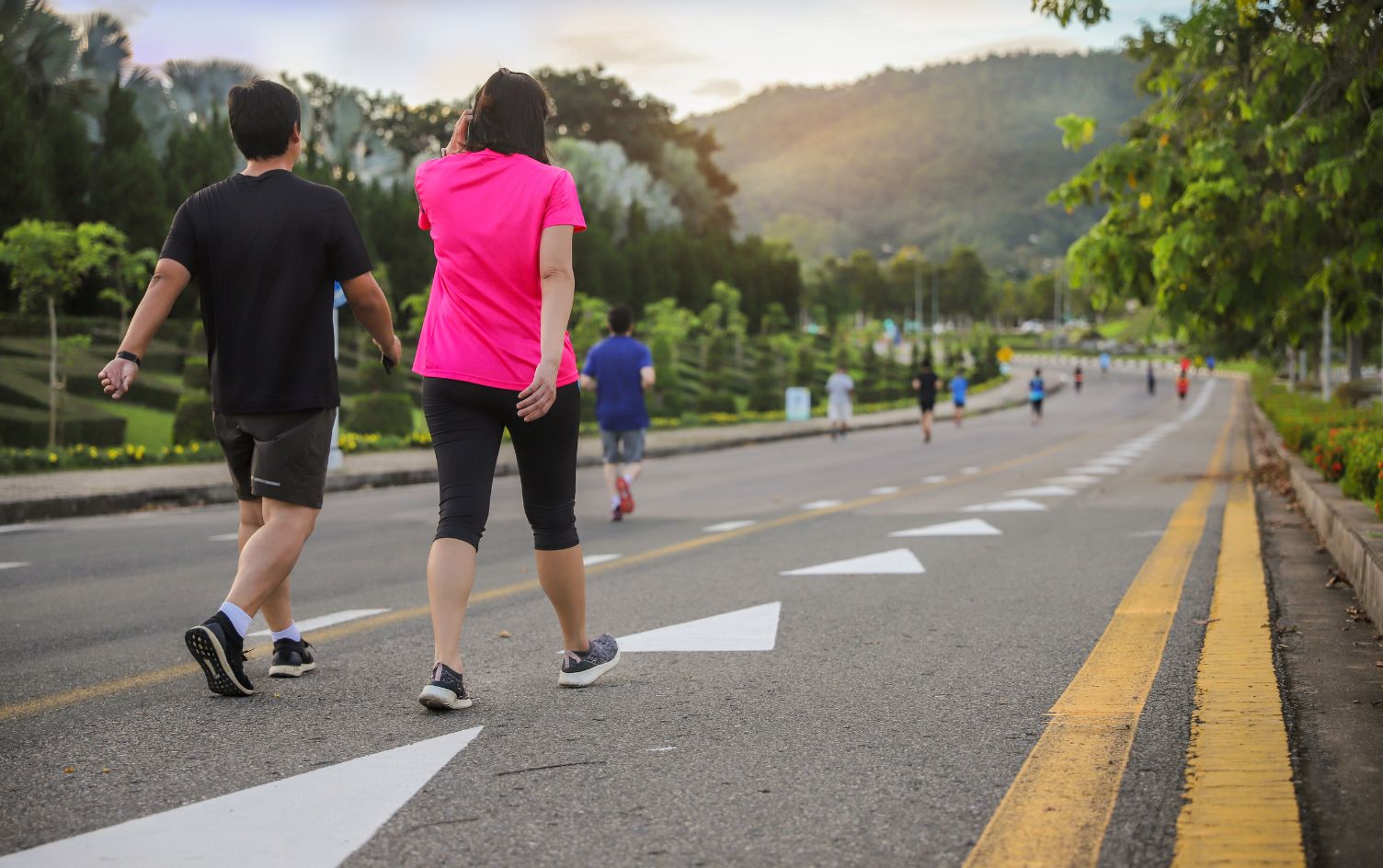Walking is more than just a personal mode of transportation. In fact, according to the Centers for Disease Control and Prevention (CDC), walking is the most popular aerobic physical activity, with more than 145 million adults including it as a key part of their active lifestyle.
With all of those steps being racked up, you’d think we all are doing it correctly. Well, we are here to tell you that you might be walking the wrong way — and it definitely matters.
YOUR POSTURE MATTERS
Having poor posture doesn’t mean you’re lazy; it actually could mean there is an underlying cause such as underdeveloped muscles. According to Harvard Medical School, it may be a sign of overly tight muscles or a weak core. Focusing on correct posture while walking will not only build strength in weak muscles, but it will also increase the benefits your entire body gets from the exercise.
“When walking with improper poor form, we are not capitalizing on our time invested in improving our overall health,” explains Dr. Michael Gleiber, a board-certified orthopedic spine surgeon. “Not only is walking extremely beneficial from a cardiovascular standpoint, it’s highly beneficial for our musculoskeletal system.”
Poor posture isn’t simply a result of an imbalance in the body; it can actually cause health issues in the future. The American Posture Institute notes that poor posture puts additional strain on the body and leads to issues like spinal degeneration and diffuse pain. More than making walking easier, your posture has a large impact on your overall health and well-being.
RELAX THAT BACK
Maintaining proper posture isn’t about standing stiffly upright; according to Dr. Gleiber, it is in fact the opposite. He stresses that proper body mechanics are actually achieved when you stay relaxed, especially as it relates to the spine.
“This technique begins by keeping one’s head and neck in proper alignment so that the head is centered over the torso, and the eyes are looking forward to the distant horizon,” Gleiber says. “By avoiding excessive flexion or hyperextension — bending forward or backwards — at the head and neck junction, undue pressure on our intervertebral discs is avoided.”
He notes that our body follows our head’s position; if the head is slumped forward, the rest of the body will follow. By staying relaxed — especially in the shoulders — you can prevent a lot of postural pain.
Back pain is so common that, according to the American Chiropractic Association, 31 million Americans experience low-back pain at any given time. In fact, it found most cases of back pain are not caused by an underlying condition. This is why your posture while walking is more important than you may realize; it’s not just about following the old adage to “walk tall.”
Dr. Gleiber reminds us that walking isn’t all about elongating our spine and keeping the shoulders neutral. Paying attention to the movement of our arms and legs is also a key part of proper walking technique.
“Our arms will ideally be at our sides with the elbows flexed about 45–60 degrees,” he adds. “Our arms assist our legs in propelling us forward with our left arm moving forward as our right leg is in stride (and vice versa). The key point here is to stay relaxed and let your arms and legs flow into a synchronous rhythm.”
READ MORE > 3 COMMON WALKING MYTHS, BUSTED
Finally, paying attention to stride length is a key to avoiding injury. Dr. Gleiber shares that the pelvis should be facing forward and hips should be parallel. While stepping in this position, keeping your stride natural and avoiding steps that are too long will help prevent overuse injuries.
HOW TO WALK WITH PROPER GAIT
With your stride length in mind, you want to be aware of your gait. Once you’ve aligned your body, paying attention to how your feet interact with the ground is the final piece of the puzzle. Dr. Gleiber says there are three stages to the gait cycle that involve the heel, midfoot and toes. Understanding the difference between these three helps you propel yourself forward in the most efficient — and safest — way.
“We must make sure that we strike the ground with our heel first; this aids in absorbing the shock impact through our other joints, mainly the knee,” Dr. Gleiber explains. “When we strike the ground with our knees in a slight degree of flexion, a healthy meniscus can properly absorb this shock. If we strike the ground with the midfoot — in a slapped gait pattern — we are transmitting excessive force through our lower extremity joints and placing them at risk for injury.”
Once your heel has hit the ground, Dr. Gleiber notes your foot should roll smoothly from the heel to the midfoot. From there, you “toe off using the toe flexors” to send your foot and leg forward before starting all over again with the other foot.
We know this is a lot to consider all the way from your head down to your toes for an activity we do everyday without much thought. However, by taking just a few minutes each day to be aware of your posture and work toward making any corrections needed, you can keep your body healthy — and mobile — for as long as possible.




